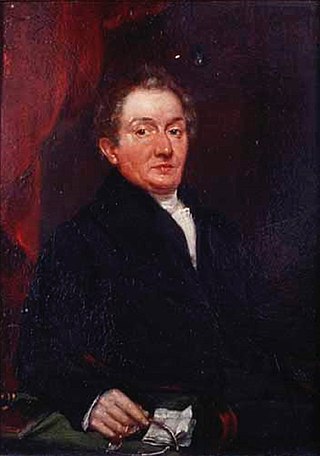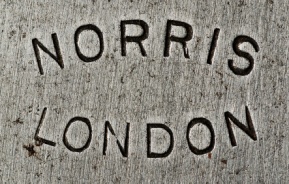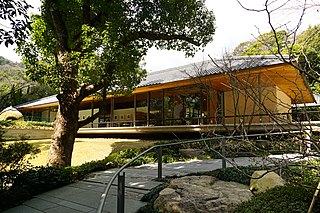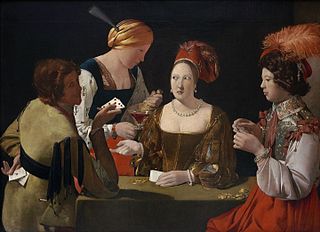Related Research Articles

A gimlet is a hand tool for drilling small holes, mainly in wood, without splitting. It was defined in Joseph Gwilt's Architecture (1859) as "a piece of steel of a semi-cylindrical form, hollow on one side, having a cross handle at one end and a worm or screw at the other".

The Musée de Cluny, officially Musée de Cluny-Musée National du Moyen Âge, is a museum of medieval art in Paris. It is located in the 5th arrondissement of Paris, bordered by square Samuel-Paty to the south, boulevard Saint-Michel to the west, boulevard Saint-Germain to the north, and rue Saint-Jacques to the east.

A spokeshave is a hand tool used to shape and smooth woods in woodworking jobs such as making cart wheel spokes, chair legs, paddles, bows, and arrows. The tool consists of a blade fixed into the body of the tool, which has a handle for each hand. Historically, a spokeshave was made with a wooden body and metal cutting blade. With industrialization metal bodies displaced wood in mass-produced tools. Being a small tool, spokeshaves are not suited to working large surfaces.

A brace is a hand tool used with a bit to drill holes, usually in wood. Pressure is applied to the top while the handle is rotated. If the bit's lead and cutting spurs are both in good working order, the user should not have to apply any pressure other than for balance: the lead will pull the bit through the wood. Bits used to come in a variety of types but the more commonly used Ridgeway and Irwin-pattern bits also rely on a tip called a snail, which is a tapered threaded screw that pulls the bit forward.
Although an antique tool might be said to be one that is more than a hundred years old, the term is often used to describe any old tool of quality that might be deemed collectable.

Paul Storr was an English goldsmith and silversmith working in the Neoclassical and other styles during the late eighteenth and early nineteenth centuries. His works range from simple tableware to magnificent sculptural pieces made for royalty.
The Holtzapffel dynasty of tool and lathe makers was founded in Long Acre, London by a Strasbourg-born turner, Jean-Jacques Holtzapffel, in 1794. The firm specialized in lathes for ornamental turning but also made a name for its high-quality edge and boring tools.
Rundell & Bridge were a London firm of jewellers and goldsmiths formed by Philip Rundell (1746–1827) and John Bridge.
Edward Preston & Sons is a tool manufacturer based in Birmingham, England.
The firm of Alexander Mathieson & Sons was one of the leading makers of hand tools in Scotland. Its success went hand in hand with the growth of the shipbuilding industries on the Firth of Clyde in the nineteenth century and the emergence of Glasgow as the "second city of the Empire". It also reflected the firm's skill in responding to an unprecedented demand for quality tools by shipyards, cooperages and other industries, both locally and far and wide.

The firm of T. Norris & Son was one of the most prestigious makers of hand tools in England in the late nineteenth and early twentieth centuries and famed for the quality and gracefulness of its output, notably of its metal planes. Both wooden and metal planes made in Norris's workshop survive as do other edge tools. Some Norris planes, especially bespoke models, are highly prized by woodworkers and collectors.
Philip Rundell (1746–1827) was a highly prosperous English jeweller, fine jewellery retailer and master jewellery makers' business proprietor, known for his association with royalty. With John Bridge, he ran and co-owned Rundell and Bridge, a firm with widespread interests in the jewellery and precious metal trades.

Diana Widmaier Picasso is a French art historian specialized in modern art, living in Paris.
Philippa Jane Glanville , OBE, FSA, formerly chief curator of the metal, silver and jewellery department of the Victoria and Albert Museum, is an English art historian who is an authority on silver and the history of dining.

The Takenaka Carpentry Tools Museum is a museum of carpentry tools in Kobe, Japan. The museum was opened in 1984 with the objective of collecting and conserving ancient tools as an example of Japanese cultural heritage, in order to pass them on to the next generation through research and exhibitions.

Charles Henry Truman, FSA, was an art historian and a leading authority on gold boxes.

Alain Erlande-Brandenburg was a French art historian and honorary general curator for heritage, a specialist on Gothic and Romanesque art.

The Shepherds is a c. 1717 painting by Antoine Watteau, now in the Schloss Charlottenburg in Berlin. It is the most finished version of a composition later reused by the same artist in Pastoral Pleasure.

The Hurdy-Gurdy Player is an oil-on-canvas painting by Georges de La Tour. The artist neither signed nor dated it, but it was produced in the first phase of his career, probably between 1620 and 1625. It is also known as The Hurdy-Gurdy Player in a Hat or The Hurdy-Gurdy Player with a Fly. It is now in the Musée d'Arts de Nantes.

The Card Sharp with the Ace of Diamonds is an oil-on-canvas painting produced c. 1636–1638 by the French artist Georges de La Tour. It is now in the Louvre, which bought it in 1972. Though its commissioner is unknown, it is signed Georgius De La Tour fecit under the card sharp's elbow and in the shadow of the tablecloth.
References
- ↑ Dust-wrapper for Katherine Prior and John Adamson Maharajas' Jewels, Paris: Éditions Assouline (2000).
- ↑ "Trade Notes", Bookseller , no. 3747, 15 October 1977, p. 2475; the announcement states that Adamson had been "Cambridge's representative in Scandinavia, the Netherlands, Austria and Switzerland for the last two years".
- ↑ "Trade Notes", Bookseller , no. 3886, 4 June 1980, p. 2467; Cambridge University Reporter , Michaelmas, 7 October 1980. See also Saito, Sumio, The Foreign Book Trade: A Memoir from Japan, Tokyo (2005) ISBN 978-4-901617-01-7, p. 78.
- ↑ London Gazette , Supplement 50896, 20 April 1987. At the time of the award, Geoffrey Cass, CUP's chief executive commented: "This export award is the result of teamwork – and the award authorities emphasize that the award is granted to the press as a whole as an acknowledgement of outstanding achievement by management and staff working as a team." Cambridge Evening News , 17 July 1987. In his Short History of Cambridge University Press (Cambridge: CUP [2000] ISBN 978-0521-77572-4), Michael Black stated that the award was bestowed on the Press in 1987 "on account of its remarkable export record: two-thirds of its then annual output of 1,000 new academic and educational books were exported worldwide to over 150 countries annually, around double the export ratio of British publishing generally" (p. 58).
- ↑ Advertisement in Le Monde , 5 December 1974, p. 18.
- ↑ "Smile for the cartoonist", Atticus (by Alan Hall) Sunday Times, 24 November 1974, no. 7902, p. 32. The exhibition ran from 20 November 1974 to 10 December 1974, but was extended. See George Adamson Selected exhibitions. There was no catalogue.
- ↑ Los Angeles Herald Examiner , 15 July 1975.
- ↑ "Trade Notes", Bookseller , 28 August 1987; The Times, 23 April 1988, no. 63063; see also National Portrait Gallery Triennial Report, 1987–90, London: National Portrait Gallery Publications (1990) ISBN 1-85514-064-0, pp. 107 and 108.
- ↑ Ormond, Richard, Caroline Blackett-Ord, Franz Xaver Winterhalter and the Courts of Europe, 1830–70, exh. cat. London: National Portrait Gallery Publications (1987) ISBN 0-8109-3964-9; French edition: Franz Xaver Winterhalter et les cours d'Europe de 1830 à 1870, exh. cat. Paris: Musée du Petit Palais (1988) ISBN 978-2-905028-20-4.
- ↑ Wilson, Jeremy, T.E. Lawrence, exh. cat. London: National Portrait Gallery Publications (1988) ISBN 0-904017-85-0.
- ↑ Bayly, C.A. (ed.), The Raj: India and the British 1600–1947, exh. cat. London: National Portrait Gallery Publications (1990) ISBN 1-85514-026-8; also co-published in India with Oxford University Press.
- ↑ Foister, Susan; Robin Gibson, Malcolm Rogers, Jacob Simon, The National Portrait Gallery Collection, London: National Portrait Gallery Publications (1988) ISBN 0-904017-89-3; US cloth edition (New York: Cambridge University Press) ISBN 978-0-521-37392-0.
- ↑ "Trade Notes", Bookseller , 2 October 1992, no. 4528, p. 994.
- ↑ The Wallace Collection Triennial Report 1992–1995, London: Wallace Collection (1995) ISBN 978-0-900785-50-4, p. 16: "The Staff of the Wallace Collection: Consultant advisers", p. 36; The Wallace Collection Triennial Report 1995–1998, London: Wallace Collection (1999) ISBN 978-0-900785-63-4, "Marketing for a wider audience", pp. 29–30 and list of advisers p. 38.
- ↑ "John Adamson". Fellows Directory. Society of Antiquaries of London. Retrieved 17 October 2020.
- ↑ John Adamson website.
- ↑ The Irish Times , 17 September 2022 (retrieved 19 October 2022) and , 5 November 2022 (retrieved 10 November 2022).
- ↑ Website of the Fondation Napoléon, Paris.
- ↑ John Adamson website.
- ↑ In his review of the book Noble Households in the Art Newspaper (no. 178, March 2007, p. 47), John Harris wrote: "John Adamson in Cambridge has produced and printed a handsome volume".
- ↑ A French-language edition was also published (Bijoux de Maharadjas, Paris: Éditions Assouline ISBN 978-2-84323-216-9) as well as US and Indian editions (New York: Vendome Press ISBN 978-0-86565-218-7; Ahmedabad: Mapin Publishing ISBN 978-81-85822-79-2).
- ↑ Éditions Diane de Selliers' Ramayana site; translation page of John Adamson's official site.